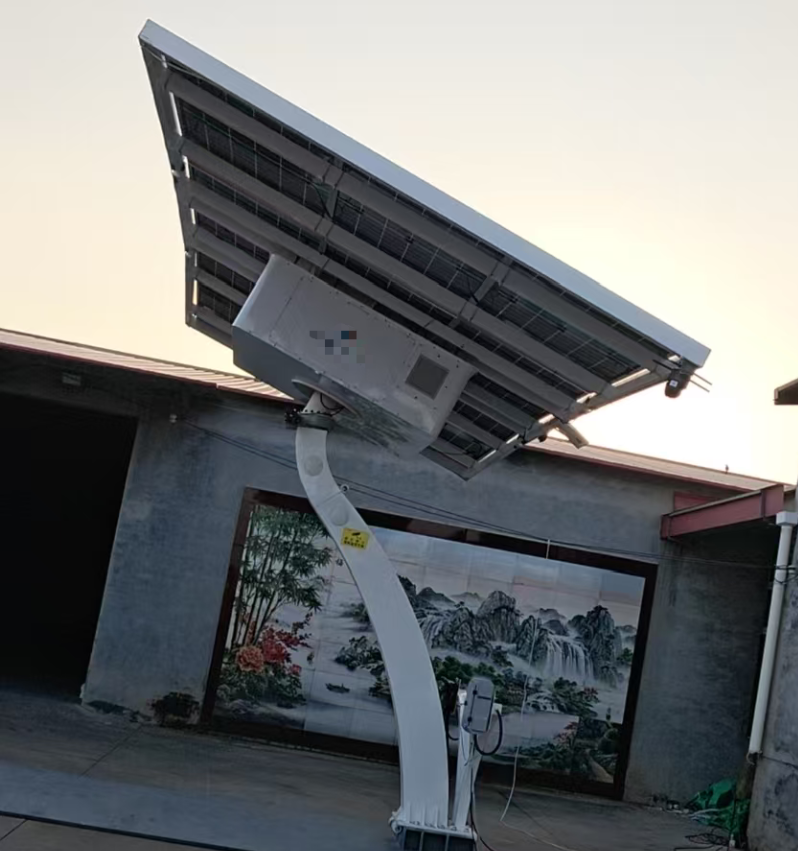Dual-Axis vs. Single-Axis: A Technical Deep Dive for Distributors – Which Tracking System Is Right for Your Market?
by
Dual-Axis vs. Single-Axis: A Technical Deep Dive for Distributors – Which Tracking System Is Right for Your Market?
Distributors face margin pressure as solar commoditizes. Dual-axis tracking offers differentiation—but is it worth the complexity?
Dual-axis tracking maximizes energy yield[^1] by following the sun’s full path, while single-axis offers simpler operation at lower cost. Choose based on energy needs, terrain, and budget constraints.
As solar distributors, you’re not just selling hardware—you’re selling solutions. The tracking system decision impacts everything from installation complexity[^2] to customer ROI. Let’s break down which technology fits different market segments.
The Shift Is Happening: Why Static Panels Are Becoming Obsolete for Off-Grid Power (And What Your Customers Will Demand Next)
Why are off-grid clients suddenly rejecting fixed panels? Because they’ve experienced blackouts during peak demand.
Static panels waste 25-30% potential energy versus tracking systems. Off-grid customers now demand maximum yield from limited space, making tracking systems the new standard for reliability.
The Performance Gap: Tracking vs Static
| System Type | Energy Increase | Ideal Applications |
|---|---|---|
| Single-Axis | 25-30% | General off-grid, agricultural |
| Dual-Axis | 35-45% | High-value applications, limited space |
The mathematics are undeniable. While fixed panels peak at noon, dual-axis systems maintain optimal angle from sunrise to sunset. For remote clinics or telecom towers where reliability is non-negotiable, that extra 15% energy could mean continuous operation during cloudy days.
Market Evolution: From "Nice to Have" to "Must Have"
Three years ago, tracking was premium equipment. Today, it’s becoming expected. Customers who previously accepted generator backup now expect 24/7 solar power. The tipping point came when battery costs dropped—making every watt of solar generation more valuable.
Distributors who ignore this shift risk being stuck with obsolete inventory while competitors capture the high-margin tracking market.
Powering the "Experience Economy": How to Dominate the Outdoor Festivals, Glamping & Pop-Up Retail Market
Why are event organizers suddenly obsessed with solar tracking? Because failed power means ruined experiences.
Mobile dual-axis systems provide reliable power for temporary installations without grid access. Their rapid deployment and high yield make them ideal for events, glamping, and pop-up retail applications.
The Experience Economy Power Requirements
Event power demands are unique:
- Peak Usage: Evenings and nights (lighting, sound, cooking)
- Space Constraints: Minimal ground footprint
- Mobility: Rapid setup/teardown between events
Dual-axis tracking[^3] outperforms here because it generates extra morning/evening power when events need it most. Single-axis[^4] systems might suffice for daytime-only events, but most premium experiences extend into night hours.
Installation Scenarios: Which Tracker for Which Event?
| Event Type | Recommended System | Key Considerations |
|---|---|---|
| Music Festivals | Dual-Axis Trailers | High energy demand, multiple days |
| Glamping Sites | Single-Axis Ground Mount | Balance of cost and performance |
| Pop-Up Retail | Dual-Axis Portable | Maximum impact in limited space |
The luxury glamping market particularly values dual-axis systems—guests expect full amenities despite remote locations, and operators appreciate the reduced generator dependency.
Case Study: How an Australian RV Supplier Increased Their Accessory Revenue by 60% with Our Mobile Solar Kits
Why did RV buyers pay premium prices for integrated tracking? Because freedom shouldn’t mean power anxiety.
By integrating dual-axis tracking systems as premium RV options[^5], the supplier tapped into customers’ desire for extended off-grid capability, creating a high-margin accessory that differentiated their offerings.
The Implementation Strategy
The Australian distributor didn’t just add trackers—they created complete power solutions:
- Tiered Offerings: Basic (static), Advanced (single-axis), Premium (dual-axis)
- Demonstration Units: Let customers experience the difference
- Finance Options: Spread the premium cost over vehicle payments
The results were dramatic. The premium tracking option achieved:
- 35% attachment rate on high-end RVs
- 60% higher accessory revenue per vehicle
- Enhanced brand positioning as technology leaders
Technical Considerations for Mobile Applications
RV installation requires special considerations:
- Weight Distribution: Balanced mounting to avoid handling issues
- Aerodynamics: Low-profile designs for highway travel
- Automation: Self-deploying systems for convenience
The supplier succeeded because they solved real customer problems—not just selling hardware, but selling worry-free off-grid experiences.
Conclusion
Choose single-axis for cost-sensitive applications, dual-axis for maximum performance where space is limited or reliability is critical.
[^1]: Understand the key factors that influence energy yield to optimize solar installations.
[^2]: Gain insights into the complexities of solar panel installation and how to manage them.
[^3]: Explore the advantages of dual-axis tracking systems to maximize energy yield and differentiate your offerings.
[^4]: Learn how single-axis tracking systems operate and their cost-effectiveness for various applications.
[^5]: Discover how premium RV solar options can enhance off-grid capabilities and customer satisfaction.
Popular Posts
You may also be interested in:




